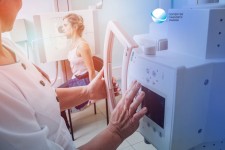The Center for Diagnostic Imaging Explains the Role of Digital Mammography in Detecting Abnormalities at an Early Stage

MIAMI, April 30, 2019 (Newswire.com) - Mammography has become a crucial tool in detecting breast abnormalities, explains the Center for Diagnostic Imaging. A mammogram is a vital tool in detecting breast cancer. There are two types of mammograms: analog mammogram and digital mammogram. Both of these techniques use X-rays to get an image; the only difference is that on an analog mammogram, the images are printed on a film, whereas, in a digital mammogram, the images are directly viewed and stored in a computer system.
Digital mammography is especially beneficial for women with dense breasts; it is more difficult to differentiate between tumors and fibro cysts in analog mammography as both appear white on an analog mammogram. In a digital mammogram, a radiologist can change the contrast of the images and can highlight the areas of concern. Another benefit of digital mammography is that images can be zoomed in on a computer screen, helping the radiologist to analyze the condition more acutely.
Who should go for mammography?
Mammography is advised to both men and women whenever there are chest abnormalities. If someone develops a lump in the chest or breast, they are advised to undergo mammography to see if the lump is cancerous or not. Not all lumps are cancerous, some are benign and they are not required to be taken out of the body.
Mammography is advised for women when they have constant and sharp pain in their breasts.
How mammography is performed?
A patient is asked to remove the clothing from the waist above. The breast is compressed against the mammography machine and two plates attached to the machine exert pressure on the breast to compress them and get clear images. The compression is applied just for a few seconds; mammography is not a painful exam, however, if a patient feels uncomfortable, they should tell their technician.
It is also important for them to tell their physician if they have had any breast surgery in the past. Implants do not affect the results of a mammography exam.
Mammography typically takes less than 20 minutes. The patient gets the result the next day. If the physician finds something suspicious, they will advise the patient to go for a biopsy.
There is nothing to be afraid of if the doctor advises a biopsy; a biopsy is the only way to tell if a lump is cancerous or not. It is important to note that 95 percent of all biopsies come out as negative. Early screening at the Center for Diagnostic Imaging in Miami is essential to detecting breast cancer at an early stage.
About CDI: The center is owned and operated by a team of board-certified physicians and staff determined to be South Florida's premier imaging series. CDI is dedicated to serving the healthcare needs of the community through the use of the most highly advanced technology and techniques currently available within the imaging industry. As a premier imaging center in Miami, CDI offers CT scans in Miami, mammograms in Miami and MRIs in Miami Beach.
Source: The Center for Diagnostic Imaging